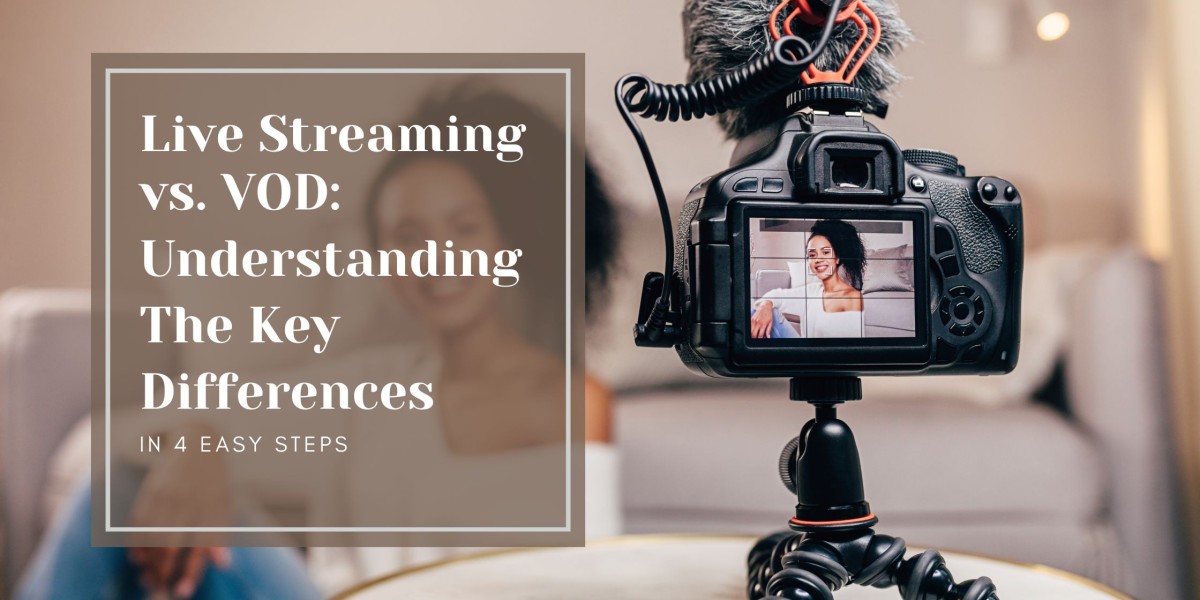The advent of digital media has revolutionized the way we consume content, with live streaming and video on demand (VOD) emerging as two prominent methods. Both live streaming and VOD offer unique advantages and cater to different audience preferences.
In this blog post, we will delve into the key differences between live streaming and VOD, exploring their respective characteristics, benefits, and use cases.
By understanding these differences, content creators and businesses can make informed decisions about which method aligns best with their objectives and target audience.
Definition and Functionality
To begin, let's define live streaming and video on demand. Live streaming refers to the real-time broadcasting of content over the internet, allowing viewers to watch events as they happen. It offers an interactive experience, enabling audiences to engage with the content creator or participate in live discussions.
On the other hand, video on demand allows viewers to access pre-recorded content at their convenience. VOD platforms offer a library of videos that users can choose from and watch at any time, giving them more control over their viewing experience.
Real-Time Experience vs. On-Demand Access
One of the primary differences between live streaming and VOD is the aspect of real-time experience. Live streaming provides an immediate connection with the audience, creating a sense of urgency and excitement. Viewers can engage with the content in real-time, such as asking questions, leaving comments, or participating in polls. Conversely, VOD offers on-demand access, allowing viewers to consume content at their preferred time and pace. This flexibility appeals to individuals with busy schedules or those who prefer to binge-watch multiple episodes or videos in one sitting.
Content Types and Use Cases
Live streaming is ideal for events that require real-time engagement, such as conferences, webinars, sports broadcasts, or live performances. It enables content creators to interact with the audience, respond to their queries, and build a sense of community. Additionally, live streaming is well-suited for behind-the-scenes glimpses, product launches, and breaking news updates.
VOD, on the other hand, caters to a broader range of content types. It is commonly used for movies, TV shows, documentaries, tutorials, and recorded webinars. VOD platforms like Mastera, Netflix, Hulu, and YouTube allow users to explore a vast library of content, offering the convenience of watching what they want, when they want it. VOD is also popular for educational purposes, as it allows learners to access instructional videos or online courses at their convenience.
Interactivity and Engagement
Live streaming excels in creating an interactive and engaging experience. Viewers can interact with the content creator and fellow viewers through chat features, live polls, or Q&A sessions. This real-time interaction fosters a sense of community and can be leveraged for audience feedback or market research. Furthermore, live-streaming events often generate a buzz on social media platforms, with viewers sharing their thoughts and reactions in real time.
In contrast, VOD platforms offer limited interactivity. While viewers can still engage through comments or likes, the level of engagement is not as immediate or dynamic as live streaming. However, VOD platforms often provide algorithms and recommendations based on user's preferences and viewing history, enhancing the personalization of the viewing experience.
Monetization Opportunities
Both live streaming and VOD present various monetization opportunities for content creators and businesses. Live streaming can generate revenue through ticketed events, pay-per-view models, or sponsorships. Content creators can also leverage live streaming to promote products or services, and engage in influencer marketing collaborations.
VOD platforms offer monetization through subscription models, where users pay a recurring fee for access to premium content. Advertisements and partnerships with brands are also common revenue streams for VOD platforms. Moreover, content creators can earn money through ad revenue sharing, sponsorships, or selling digital products associated with their videos.
Conclusion
In conclusion, live streaming and video on demand serve distinct purposes and cater to different audience preferences. Live streaming offers a real-time and interactive experience, allowing content creators to engage with their viewers and build a sense of community. On the other hand, VOD provides on-demand access to a vast library of content, granting viewers the flexibility to watch at their convenience.








